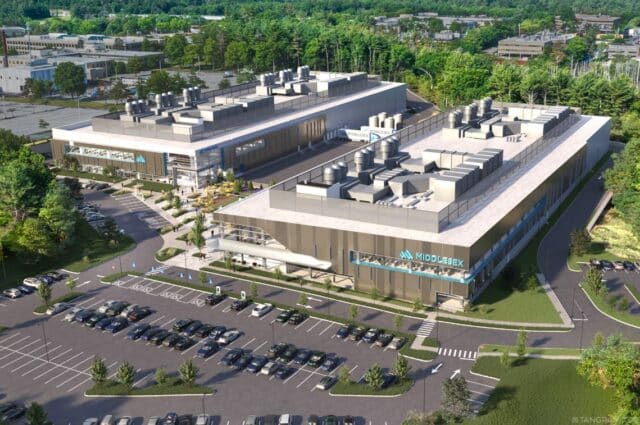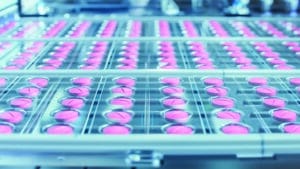Employment in the biomanufacturing sector, seen as a new frontier for life science jobs growth across Massachusetts, took a dip last year.
Massachusetts lost a little more than 2 percent of its biomanufacturing workforce last year, shaving off nearly 230 jobs from a sector that employs more than 10,000 people across the Bay State. While biomanufacturing leader California took a bigger hit (a more than 7 percent decline off its more than 40,000-job pool), competing states like New Jersey, North Carolina and Texas all saw biomanufacturing job growth.
But key stakeholders are looking to put that in the past to show the Bay State remains a formidable powerhouse against competing states, namely North Carolina, seen as more affordable alternatives to Massachusetts.
“A lot of the technologies and therapies that are manufactured in North Carolina are more ready for commercial consumption,” said Ben Bradford, head of external affairs at industry trade group MassBio. “What Massachusetts succeeds at is these advanced therapies, cell and gene therapy and RNA technologies. They’re not at their infancy, but they’re far behind what small molecule and less complex biologics manufacturing is. What we would say is that the hard stuff is in Massachusetts.”
MassBio leaders aren’t pushing the panic button yet over the lost jobs. In fact, Bradford noted the biomanufacturing sector in Massachusetts gained more than 200 jobs in the first three months of this year – nearly erasing the small job loss seen in 2023. Further, he sees it as a waiting game for when the biomanufacturing sector here truly enters a boom cycle, as some of the therapies in the research and development phase in Greater Boston are more complex than those currently being manufactured in other states.
“As these challenging therapies become more prevalent, and they make up a great percentage in our pipeline, we’ll continue to see more that manufacturing happening here,” Bradford said.
But it’s not just a case of wait-and-see. MassBio’s industry snapshot notes the potential for the life science industry to significantly expand its biomanufacturing presence in Massachusetts hinges on a mix of the state’s “leadership in advanced modalities” along with friendly state policy and potential federal resources.
At the state level, that means approving Gov. Maura Healey’s $1 billion, 10-year reauthorization of the Life Sciences Initiative. The plan includes a mix of bond dollars for infrastructure and nonprofits, tax incentives tied to job creation and flexible funding that Bradford hopes would go toward early-stage companies working on new innovations. Moving forward on the measure requires convening a special session at the State House, as legislators failed to pass an economic bill during the last legislative session.
“This would be a tremendous tool – a billion dollars over 10 years – to really take what we see as an opportunity and turn it into reality here in Massachusetts,” Bradford said.
Central Massachusetts Stakes a Claim
In the meantime, others are moving ahead and planning for future biomanufacturing growth across the state. While Massachusetts overall may have lost biomanufacturing jobs last year, Worcester County was the only county in the state to see net job growth: a nearly 12 percent increase in sector employment.
Jon Weaver, president and CEO of life sciences incubator Massachusetts Biomedical Initiatives (MBI), chalks up the continued success of biomanufacturing growth in central Massachusetts – where companies like AbbVie, Bristol Myers Squibb, WuXi Biologics and Moderna have a presence – to having access to the global-leading talent of Greater Boston with some of the affordability appeal of Sunbelt states.
“We have the talent that the industry really relies on and needs to be successful, and then we’re more affordable and there’s availability of land,” Weaver said, noting Worcester has significantly lower housing costs than Greater Boston. That enables the region to compete with regions such as Durham, North Carolina, where the average home price is currently $405,000, according to Zillow data.

Camber Development and Wheelock Street Capital recently completed the first phase of a 294,000-square-foot advanced manufacturing and biomanufacturing-ready campus at 44 Middlesex Turnpike in Bedford. Photo courtesy of Newmark
Weaver also points to supportive permitting in Worcester as well as a strong higher education network independent of Boston as crucial to success. Plus, it’s still less than an hour’s drive to the life science hotbeds of Kendall Square in Cambridge and the Seaport in Boston. MBI anticipates an additional 1,200 biomanufacturing jobs in the next two to three years.
Despite the region’s strengths, MBI has requested “modest public investments” to make Massachusetts’ biomanufacturing sector competitive in coming years.
In a July report, the group released its biomanufacturing growth strategy including recommendations for new state investment in the sector. The wish list includes $20 million for Gateway Cities biomanufacturing startups, $20 million for speculative lab and manufacturing projects outside Interstate 495, and new workforce development and recruitment programs.
Developers Double Down on Bedford Project
But what about eastern Massachusetts, seen as the global hub of the life science sector? In suburban Bedford, Camber Development and Wheelock Street Capital this month completed the first 147,000-square-foot phase of an advanced manufacturing complex at 44 Middlesex. A second 147,000-square-foot phase is scheduled to break ground in 2025.
“For as much as we’ve seen a lot of negatives in the market, we continue to see activity,” said Rory Walsh, a Newmark executive managing director who is one of the leasing agents at 44 Middlesex. “Once one shoe drops or one tenant makes the decision to move forward, I think that’ll create kind of a snowball effect in the market.”
Like others interviewed for this story, Walsh said biomanufacturing activity and growth is coming from a mix of existing companies in the market looking to bring manufacturing closer to their R&D facilities as well as out-of-market tenants looking to enter Greater Boston.
“Manufacturing was a tremendous opportunity for Massachusetts, and I think it’s our job to ensure that people across the Commonwealth understand that this is a tremendous career to help people all around the world,” Bradford said. “We need as much interest as possible in working in this industry, whether it’s at the manufacturing level or entry level or in R&D.”






